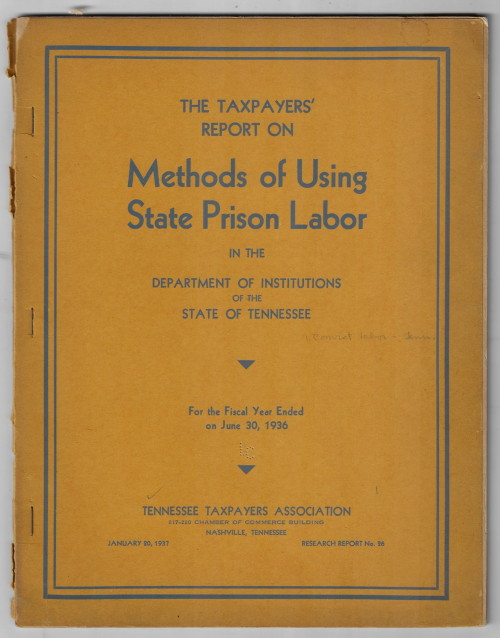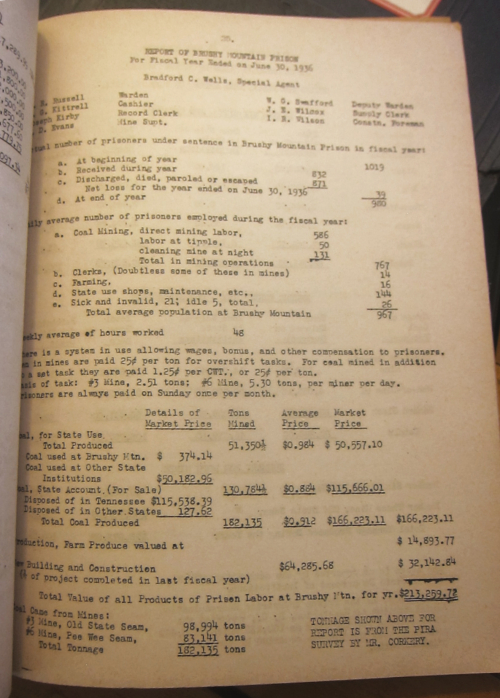 The taxpayers' report on methods of using state prison labor in the Department of institutions of the state of Tennessee, for the fiscal year ended on June 30, 1936. Nashville, Tenn., Tennessee taxpayers association, 1937. 2 p.l., 40 p. 28 x 22 cm. Original wrappers, staple-bound. Provenance: Library of Congress, with their 6mm perforated “LC” in the front cover and their surplus rubber stamp on the rear cover. $200
The taxpayers' report on methods of using state prison labor in the Department of institutions of the state of Tennessee, for the fiscal year ended on June 30, 1936. Nashville, Tenn., Tennessee taxpayers association, 1937. 2 p.l., 40 p. 28 x 22 cm. Original wrappers, staple-bound. Provenance: Library of Congress, with their 6mm perforated “LC” in the front cover and their surplus rubber stamp on the rear cover. $200
- Only 3 copies (Duke, Rhodes (Memphis), and the LC) located in WorldCat.
There's a lot of interesting stuff in here: for example, a cursory look reveals that of the 980 inmates at the Bruahy Mountain Prison 967 of them were at work with a weekly average of 48 hours. Here's where they worked: 767 in a coal mine in a coal mine (586 “direct coal mining”, 50 at the tipple, and 131 cleaning the mines at night); clerks , 14; farming, 16; state use in maintenance, 144.
It looks like the prisoners were paid 25 cents per ton of coal mined (this after some other measure was met, presumably this is where the “free labor” came in), with an average daily production of 5 tons or what may have been $1.25 per day (about 15 cents/hr or about half the minimum wage) times six days a week times four means that they may have made $30/month for moving about 140 tons of coal. This is about what someone would make per month with the C.C.C. It is worth noting that today prisoner laborers in Tennessee make between 10 cents and on dollar an hour (with the state minimum wage at $7.25)--the 15 cents an hour from 1937 is equal to about $2.35 in 2018 dollars accounting for inflation via the Bureau of Labor Statistics.
The total coal production for the Brushy prisoners was 182,000 tons for which they were paid $213,000—the numbers here sort of work out...I'm not sure how to interpret this. I don't see where the prison makes a share of the proceeds in my brief browse.




Comments